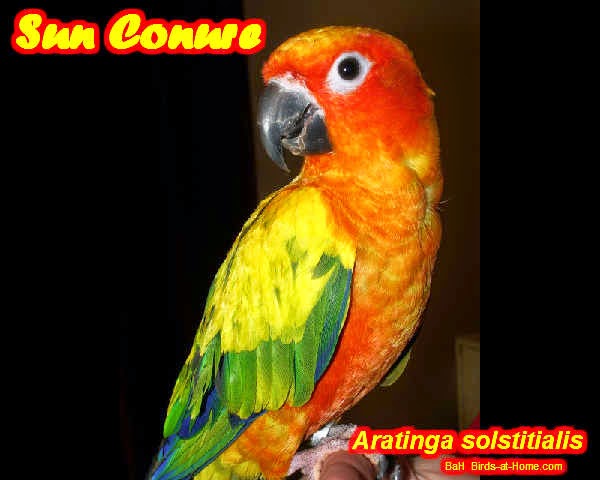 |
| Photo by Makuahine Pa’i Ki’i |
The lifetime of a Conure parrot can be between 25 to 30 years if they are in good health and they are an enjoyable pet to have around. During the initial stages they develop into a muted olive green color which is a defense mechanism in the wild, but when they mature at one year old they turn into this brilliant rainbow color of red, yellow, orange, green and blue. These birds are said to be one of the most beautiful of all Conure.
The Best Sun Conure Diet
Preparing the best Sun Conure diet does need to have attention to good nutrition which contributions to its happiness, health and quality of life. Poor nutrition is a major cause of health concern in these companion birds. Preparing the best Sun Conure diet should comprise a lot of fruits, seeds, vegetables, and nuts. These birds become bored with the same food every day so you need to make sure that you give them interesting treats which will keep them interested and active.
Seeds:
Birds are very picky when it comes to eating and no matter what type of combination of seeds you give them, they will eat only the one they find enjoyable leaving the others altogether. Unfortunately, though, this can lead to malnutrition. Occasional seeds make a good exciting treat though, as birds enjoy cracking them open and discovering each layer of the seed and exploring their various textures.
Pellets:
Pellets are an excellent source of a well-rounded nutrient diet which is easy to maintain and is best for birds. Every pellet has the same number of nutrients so you do not have to worry if your bird is a bit choosy with them. But don't be fooled into only giving them pellets as this is not good for their diet.
Fresh fruits and vegetables:
Fresh vegetables are a must for birds and should be provided to them daily. These birds will love this diet because it is more than just nutritional, but a sight of vibrant colors and exciting taste. Giving a variety of food to your bird will build up their interest in trying out new items and becoming alert every day.
Water:
While preparing the best Sun Conure diet, fresh water should be replaced twice a day. These birds are messy eaters and will drop their food into the water all the time, making the water contaminated.
While preparing the best Sun Conure diet, it is always important to bring in change and include various foods. This will keep the bird's brain alert and exercised in knowing different tastes and different color combinations. Sun conure parrots are quite intelligent and an easy pet to keep and what endears this bird to many people are their different temperaments and active lifestyle
|














